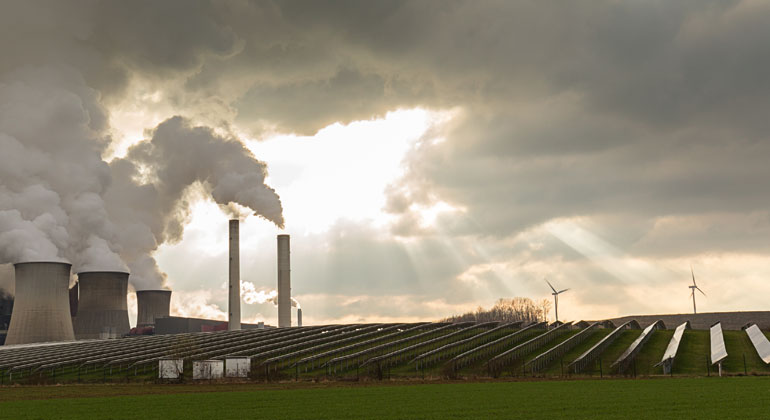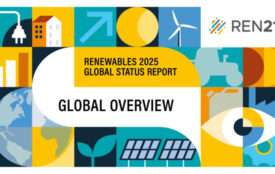World must retire coal plants almost five times faster to meet climate goals
The amount of operating and planned coal power plants fell both in developed and developing countries excluding China in 2022, as existing plants were retired and planned projects cancelled, according to Global Energy Monitor’s ninth annual survey of the coal plant pipeline.
But the pace of retirements needs to move four and half times faster – and new coal plants must stop being built – in order to put the world on track to phase out coal power by 2040, as required to meet the goals of the Paris climate agreement.
The report finds that coal power capacity retirements reached 26 gigawatts (GW) in 2022, and another 25 GW received an announced close-by date of 2030. The amount of planned coal-fired capacity in developing countries, excluding China, fell by 23 GW. However, China’s planned capacity increased by 126 GW, far offsetting changes in the rest of the world.
To stay on track, all existing coal plants must be retired by 2030 in the world’s richest countries, and by 2040 everywhere, and there is no room for any new coal plants to come online. While newly proposed coal power capacity has declined significantly, the world is not retiring existing coal plants fast enough.
Phasing out operating coal power by 2040 would require an average of 117 GW of retirements per year, or four and a half times the capacity retired last year. An average of 60 GW must come offline in OECD countries each year to meet their 2030 coal phaseout deadline, and for non-OECD countries, 91 GW each year for their 2040 deadline. Accounting for coal plants under construction and in consideration (537 GW) would require even steeper cuts.
Key findings:
- Globally, the operating coal fleet grew by 19.5 GW, or less than 1%, in 2022. More than half (59%) of the 45.5 GW of newly commissioned capacity was in China, with 14 countries in total adding new coal power. Outside China, the global coal fleet continued to shrink, although at a slower rate than in previous years.
- Total coal power capacity under development – including pre-construction and construction stages – has remained relatively level since 2019 after a significant collapse from highs in 2014. The figure hit a record low of 479 GW in 2021, but inched back up to 537 GW in 2022, a 12% one-year increase led by China.
- After the European Union retired a record high of 14.6 GW of coal capacity in 2021, the gas crisis and Russia’s invasion of Ukraine prompted a slowdown in coal retirements, with only 2.2 GW retired in the last year. Temporary restarts and extensions are generally expected to wind down in the next few years, and what appeared to be a spike in coal capacity added only 1% to total EU coal generation in 2022.
- The U.S. led coal retirements with 13.5 GW retired in 2022. To meet national energy and climate goals, continued momentum away from coal needs to accelerate.
- India sent mixed signals regarding its future coal use. The country has 28.5 GW of coal power capacity planned, up 2.6 GW in 2022, and 32 GW of coal power capacity under construction.
“The more new coal projects come online, the steeper the cuts and commitments need to be in the future,” said Flora Champenois, lead author of the report and project manager for Global Energy Monitor’s Global Coal Plant Tracker. “At this rate, the transition away from existing and new coal isn’t happening fast enough to avoid climate chaos. The IPCC and the UN have both renewed the marching order to wind down coal power globally in what may be our last chance to avoid the worst of a warming planet’s harms.”
“Progress in retiring coal power plants in rich countries and cancelling new coal power projects in developing countries, despite the gas crunch that shook global energy markets in 2022, is encouraging. Outside of China, the response to the energy crisis was dominated by investment in clean energy. However, that progress urgently needs to be accelerated. China pulled in the opposite direction, sharply increasing planned coal power capacity, showing the need to deploy clean solutions and better enforcement of existing policies that should restrict new coal power projects,” said Lauri Myllyvirta, the lead analyst for Centre for Research on Energy and Clean Air.
In addition to Global Energy Monitor, the report’s co-authors are the Centre for Research on Energy and Clean Air, E3G, Reclaim Finance, Sierra Club, Solutions for Our Climate, Kiko Network, Climate Action Network Europe, Bangladesh Poribesh Andolon, Waterkeepers Bangladesh, Alliance for Climate Justice and Clean Energy, and Chile Sustentable.
Additional summary tables for Global Coal Plant Tracker data are available here.








